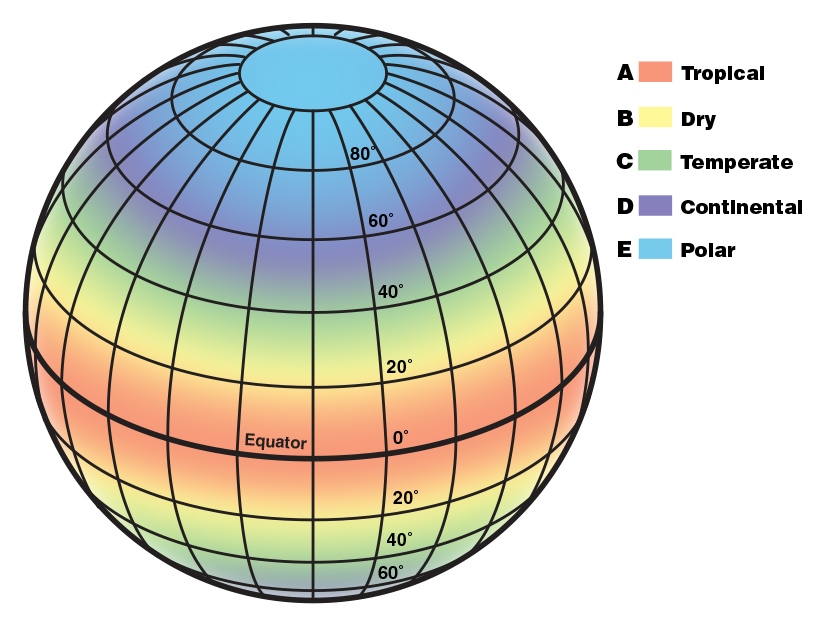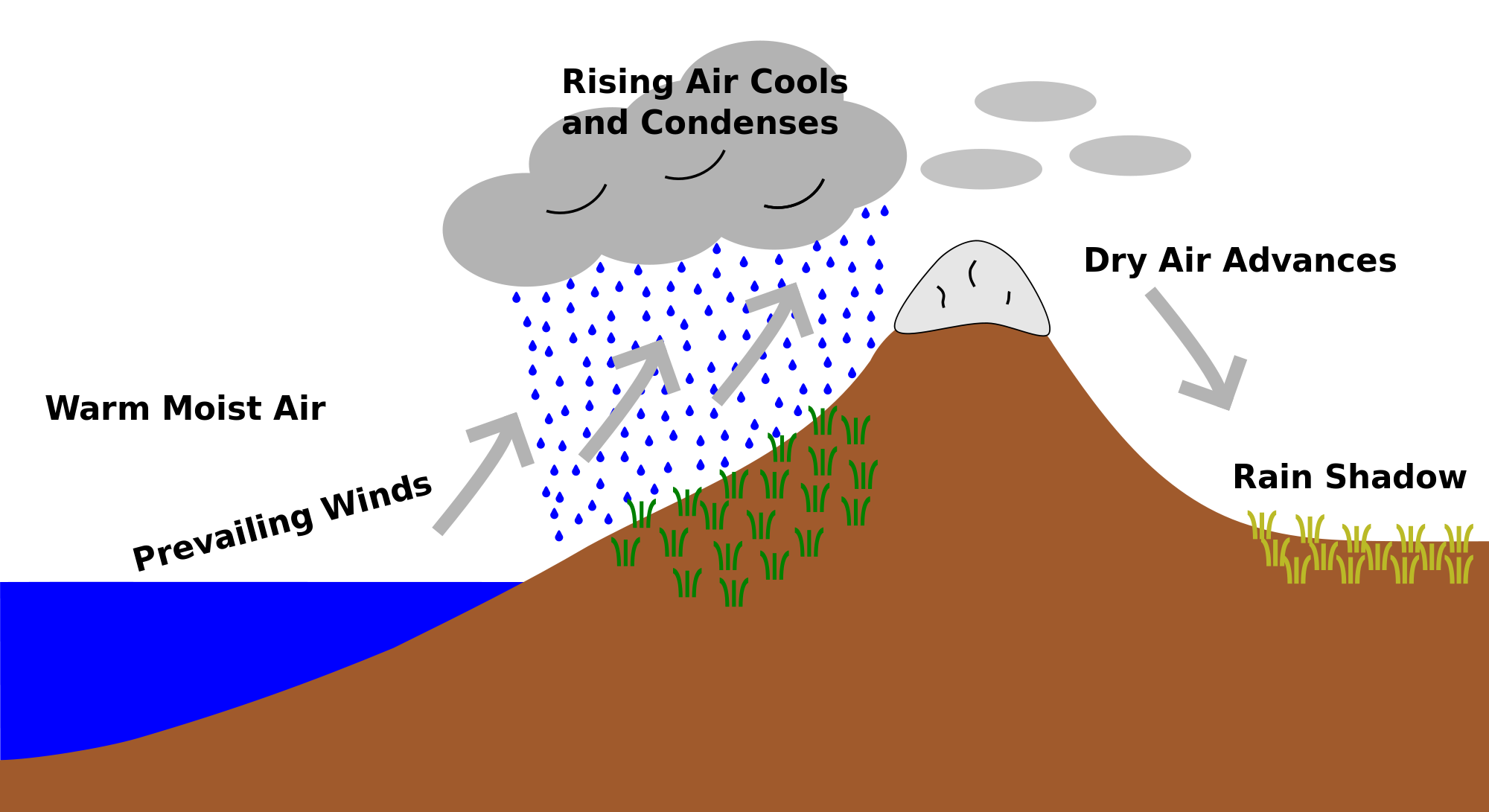


Source: NASA (2016)
Climate is the long-term pattern of weather in an area, typically averaged over a period of 30 years. The climate plays a huge role in defining biomes and impacts the plants and vegetation found there. Read through the resources below to learn more.
Climate is the long-term pattern of weather in a particular area. Weather can change from hour-to-hour, day-to-day, month-to-month or even year-to-year. A region's weather patterns, usually tracked for at least 30 years, are considered its climate. Read through this article to learn more.
A climate zone results from the climate conditions of an area: its temperature, humidity, amount and type of precipitation, and the season. A climate zone is reflected in a region’s natural vegetation. A climate type and its plants and animals make up a biome.
Have you ever wondered why one area of the world is a desert, another a grassland, and another a rainforest? Why are there different forests and deserts, and why are there different types of life in each area? The answer is climate. Read through this website to learn more.
This website describes the concepts of climate and biomes and how they are related but different to each other.
This great online chapter looks at all the different aspects of climate and how this affects biomes. It also includes links to other related topics and handy definitions of some more unfamiliar words.
This website discusses global, regional, and local factors that influence climate and how climate affects where species are found.
This website discusses the five main climate types and how those zones impact flora and fauna of that area.
Köppen climate classification, widely used, vegetation-based, empirical climate classification system developed by German botanist-climatologist Wladimir Köppen. His aim was to devise formulas that would define climatic boundaries in such a way as to correspond to those of the vegetation zones (biomes) that were being mapped for the first time during his lifetime. Köppen published his first scheme in 1900 and a revised version in 1918. He continued to revise his system of classification until his death in 1940. Other climatologists have modified portions of Köppen’s procedure on the basis of their experience in various parts of the world. Read through this article to learn more.
The Hadley cell is a movement of warm air heated by the radiation from the sun hitting the surface of the Earth near the equator. The movement of air in the Hadley cell results in the formation of the trade winds moving from the northeast toward the west in the Northern Hemisphere at the equator. Read through this article to learn more.
A rain shadow is a patch of land that has been forced to become a desert because mountain ranges blocked all plant-growing, rainy weather.
The climate of a place will be different when compared to another. The reasons for these differences can be quite complex but there are some general factors that can be identified as affecting climate. Read through this website to learn more.
Altitude and latitude are two primary factors known to affect the temperature variations on Earth's surface because varying altitude and latitude create unequal heating of Earth’s atmosphere. Read through this article to learn more.

Source: SciJinks
 Source: Research Gate
Source: Research Gate

Source: Higgins Storm Chasing


 Forces of nature
by
Forces of nature
by
 Thunder & lightning : weather past, present, future
by
Thunder & lightning : weather past, present, future
by